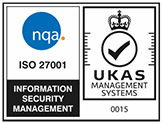Laparoscopic surgery is commonly the preferred technique for cholecystectomy (gallbladder removal), hernia repair, and appendectomy (removal of the appendix).
Most patients who develop peritonitis (inflammation of the peritoneum - the tissue that lines the inner wall of the abdomen) or bleeding after traditional surgery, display fairly obvious signs that there has been a complication.
However after laparoscopic surgery, the signs are usually much more subtle and are often overlooked by clinicians until the patient's condition health has markedly deteriorated - usually several days later.
The majority of patients who undergo laparoscopic surgery have relatively little pain and are eager to mobilise soon after the completion of the operation. Appetite is often hardly depressed at all, and it is common for patients to eat a relatively full meal within a few hours of the operation.
The speed with which normal activity is resumed is dependent upon factors such as the magnitude and type of operation. Post-operative pain is more likely to be a feature if there has been an extensive division of adhesions (tissue binds together), or if it has been necessary to enlarge the surgical incision in order to remove a large specimen or to allow the surgeons access into abdominal cavity.
If the following symptoms and signs are present during the second 12 hour period after the end of laparoscopic surgery, the presence of an abdominal complication should be suspected:-
• Abdominal pain requiring opiate analgesia (eg. codeine, morphine)
• Anorexia or reluctance to drink
• Reluctance to mobilise
• Nausea, vomiting
• Tachycardia (abnormally fast heart rate) (>100)
• Abdominal tenderness & swelling
• Decreased urine output
Pyrexia (raised temperature/fever) and tachycardia are not usually present at this early stage, and abdominal tenderness may be relatively minor.
The patient may well be able to get out of bed, and cope with small amounts of food and drink, but will not have the normal vitality, mobility and appetite shown by patients who have undergone an uncomplicated laparoscopic procedure.
In patients who have developed leakage of bile into the peritoneal cavity, liver function is usually abnormal. If there is also an obstruction of the bile duct, bilirubin (formed when red blood cells break down), is likely to be raised. If there is no obstruction, and simply just leakage of bile into the peritoneal cavity, bilirubin is characteristically the only abnormality.
Abdominal bleeding may be confirmed by the drainage of blood through an abdominal drain. Whilst this may be helpful, the absence of significant bloodstained drainage cannot be used as a reliable guide that bleeding has not occurred. If significant intra-abdominal bleeding has occurred it is important to evacuate the blood and if necessary stop further bleeding. Clinical signs of bleeding are paramount, and should not be overlooked simply because little in the way of blood has emerged through a drain. Indeed, tachycardia and abdominal pain are sometimes the only obvious signs of bleeding after a laparoscopic operation - despite significant blood loss.
As time passes it will become more apparent that the patient's recovery is far from routine. Abdominal pain and swelling are likely to persist, the patient will characteristically want to lie in bed and be reluctant to mobilise, and food and drink will be only palatable in small amounts. Urine output will continue to decline, even if intravenous fluid is provided.
If no surgical intervention occurs, it is likely that precipitous circulatory collapse combined with organ failure will eventually occur. It is therefore essential that appropriate management is undertaken before such a late stage occurs.
Particularly careful attention should be paid to any patient who has a pulse rate of 100 or greater - 6 hours after a laparoscopic procedure.
A complication may not be negligent in itself but a failure to act on warning signs, providing insufficient information to the patient and not ensuring that there are systems in place for the patient/relatives to seek clinical advice about a potential complication may be grounds for a successful clinical negligence claim.
*****If you want further information about this particular topic, or wish to discuss the possibility of bringing a claim for Clinical Negligence - or indeed any other type of injury, please contact the Dutton Gregory Clinical Negligence Team on (01202) 315005, or email c.hayter@duttongregory.co.uk
NB This article does not constitute legal advice and should not be relied on as such. No responsibility for the accuracy and/or correctness of the information and commentary set out in the article, or for any consequences of relying on it, is assumed or accepted by any member of Dutton Gregory LLP.






